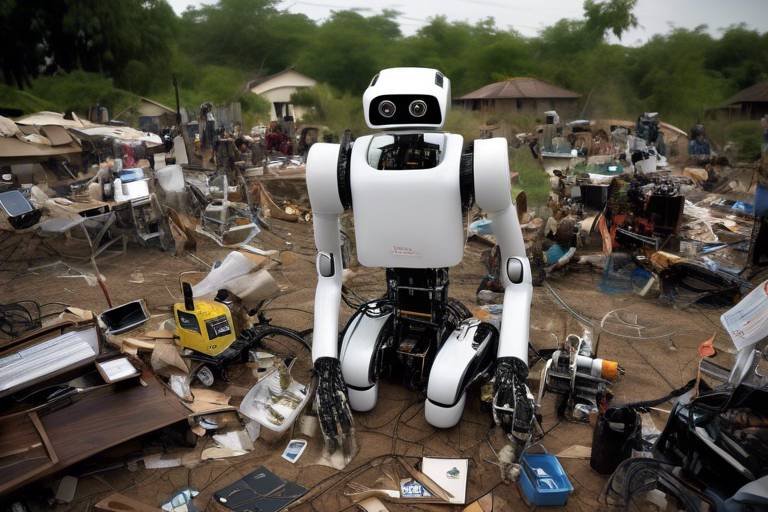The Science of Blockchain and Its Technological Applications
In recent years, blockchain technology has emerged as a groundbreaking innovation, reshaping the way we think about digital transactions and data management. At its core, blockchain is a decentralized digital ledger that records transactions across numerous computers, ensuring that the information is not only secure but also transparent and immutable. Imagine a digital notebook that everyone can see but no one can erase or alter; that’s the essence of blockchain. This technology is poised to revolutionize various industries by enhancing efficiency and fostering trust among users.
So, what makes blockchain so special? One of its most significant features is transparency. Every transaction on a blockchain is visible to all participants, which means that fraud and manipulation become exceedingly difficult. Coupled with security, where cryptographic techniques protect the data, and immutability, which ensures that once data is recorded, it cannot be changed, blockchain offers a robust solution for many digital challenges. This triple threat of transparency, security, and immutability creates a strong foundation for a myriad of applications, from finance to supply chain management.
Let’s delve deeper into the various applications of blockchain technology. Industries around the globe are beginning to harness its potential, leading to a wave of innovation that could change the world as we know it. For instance, in the financial sector, blockchain is paving the way for cryptocurrencies like Bitcoin and Ethereum, which allow for secure, peer-to-peer transactions without the need for traditional banking intermediaries. This shift not only democratizes access to financial services but also introduces a new level of efficiency and speed in transactions.
Moreover, blockchain is making waves in sectors like supply chain management. Companies can now utilize blockchain to track products from their origin to the end consumer, ensuring authenticity and reducing fraud. Imagine being able to scan a QR code on your favorite organic product and instantly verify its journey from farm to table. This level of traceability is not just a luxury; it's becoming a necessity in today's market.
However, as we explore the vast landscape of blockchain applications, it’s essential to recognize the challenges that come with it. Scalability remains a significant hurdle, as many blockchains struggle to process large volumes of transactions quickly. Additionally, regulatory frameworks are still catching up with the rapid pace of blockchain innovation, leading to uncertainty in various markets.
Despite these challenges, the future of blockchain technology shines brightly. With ongoing advancements aimed at improving scalability and interoperability, we can expect to see a more integrated approach to blockchain solutions across different sectors. The potential for blockchain to transform industries is not just a possibility; it’s a reality that is unfolding before our eyes.
- What is blockchain technology? Blockchain is a decentralized digital ledger that securely records transactions across multiple computers.
- How does blockchain ensure security? It uses cryptographic techniques to protect data and ensure that once information is recorded, it cannot be altered.
- What are some applications of blockchain? Blockchain has applications in finance, supply chain management, healthcare, and more, enhancing transparency and efficiency.
- What challenges does blockchain face? Key challenges include scalability, regulatory issues, and energy consumption.
- What does the future hold for blockchain technology? Advancements in scalability and interoperability promise to expand blockchain's applications and integration into various sectors.

[Understanding Blockchain Technology]
Blockchain technology is often described as a decentralized digital ledger, but what does that really mean? Imagine a notebook that is not owned by any single person but is instead shared among a group of friends. Each friend can write in the notebook, but once something is written, it can never be erased or altered. This is essentially how blockchain works; it records transactions across multiple computers, ensuring that everyone involved has access to the same information. The beauty of this system lies in its key features: transparency, security, and immutability.
One of the most compelling aspects of blockchain is its transparency. Every transaction is visible to all participants in the network, which fosters a level of trust that is hard to achieve in traditional systems. For instance, if you purchase a product online, you often have to rely on the seller's word regarding the authenticity and origin of that product. With blockchain, every step of the product's journey can be traced in real-time, providing undeniable proof of its authenticity.
Security is another cornerstone of blockchain technology. Each transaction is encrypted and linked to the previous transaction, forming a chain of blocks. This makes it incredibly difficult for anyone to tamper with the data. In fact, altering a single block would require the consensus of the majority of the network, making fraud nearly impossible. This is particularly crucial in industries like finance and healthcare, where data integrity is paramount.
Immutability is the final piece of the puzzle. Once a transaction is recorded on the blockchain, it cannot be changed or deleted. This characteristic not only enhances trust among users but also simplifies record-keeping. Imagine a world where your medical records are securely stored on a blockchain; you would have complete control over who accesses your information, and you could rest assured that it has not been altered or lost.
To better understand how blockchain operates, consider the following table that summarizes its key attributes and their implications:
| Attribute | Description | Implication |
|---|---|---|
| Decentralization | No central authority controls the network. | Reduces the risk of corruption and single points of failure. |
| Transparency | All transactions are visible to all participants. | Enhances trust and accountability. |
| Security | Data is encrypted and linked in a chain. | Protects against fraud and unauthorized access. |
| Immutability | Once recorded, transactions cannot be altered. | Ensures data integrity and reliability. |
In conclusion, understanding blockchain technology is crucial as it represents a paradigm shift in how we manage and secure data. Its decentralized nature, combined with transparency, security, and immutability, has the potential to revolutionize various industries, from finance to healthcare and beyond. As we continue to explore the applications and implications of blockchain, it becomes increasingly clear that this technology is not just a passing trend but a foundational element of the future digital landscape.

[Cryptocurrencies and Blockchain]
Cryptocurrencies have taken the world by storm, revolutionizing the way we think about money and transactions. At the heart of this digital currency revolution is blockchain technology, which serves as the backbone for securing and validating transactions. But what exactly does this mean? Imagine a public ledger that is not controlled by any single entity, where every transaction is recorded in a way that is transparent and tamper-proof. This is the essence of blockchain—decentralization at its finest.
The most well-known cryptocurrency, Bitcoin, was the first to leverage blockchain technology, appearing on the scene in 2009. Since then, thousands of cryptocurrencies have emerged, each with its unique features and purposes. For instance, Ethereum introduced the concept of smart contracts, enabling developers to create decentralized applications (dApps) that operate on its blockchain. This innovation has opened up a world of possibilities, allowing for everything from decentralized finance (DeFi) platforms to non-fungible tokens (NFTs).
So, how do cryptocurrencies function? Essentially, they use cryptographic techniques to secure transactions and control the creation of new units. When a transaction occurs, it is broadcast to a network of computers (or nodes) that validate it. Once validated, the transaction is added to a block, which is then linked to the previous block, forming a chain—hence the name blockchain. This process ensures that all transactions are transparent and can be traced back, making fraud nearly impossible.
The impact of cryptocurrencies on the financial landscape is profound. Traditional banking systems are often slow and costly, particularly for cross-border transactions. In contrast, cryptocurrencies enable instant and low-cost transfers, allowing individuals and businesses to transact globally without the need for intermediaries. This is especially important in regions with limited access to banking services, where cryptocurrencies can provide a viable alternative for financial inclusion.
However, it's essential to recognize that the rise of cryptocurrencies is not without its challenges. Regulatory concerns, security issues, and volatility in prices can pose risks for investors and users alike. As governments and regulatory bodies around the world grapple with how to approach this new financial frontier, the future of cryptocurrencies remains uncertain yet exciting.
In summary, the relationship between cryptocurrencies and blockchain technology is a dynamic and evolving one. As more people become aware of the benefits of decentralized currencies, we can expect to see further integration of these technologies across various sectors. The potential for innovation is limitless, and as we continue to explore this digital landscape, one thing is clear: the future of finance is here, and it’s decentralized.
- What is blockchain technology? - Blockchain technology is a decentralized digital ledger that records transactions across multiple computers, ensuring transparency and security.
- How do cryptocurrencies work? - Cryptocurrencies work by using cryptographic techniques to secure transactions, which are then validated by a network of computers and recorded on a blockchain.
- What are smart contracts? - Smart contracts are self-executing contracts with the terms of the agreement directly written into code, enhancing trust and efficiency in transactions.
- Are cryptocurrencies safe? - While cryptocurrencies offer a high level of security, they are not without risks, including regulatory challenges and market volatility.

[Smart Contracts]
Smart contracts are revolutionizing the way agreements are formed and executed. Imagine a vending machine: you insert a coin, select your snack, and voilà, your treat drops down without any human intervention. In much the same way, smart contracts operate on blockchain technology to automate processes, ensuring that all parties involved meet their obligations without needing a middleman to oversee the transaction. These self-executing contracts have the terms of the agreement directly written into code, allowing for seamless and secure transactions.
One of the most compelling advantages of smart contracts is their ability to enhance efficiency. Traditional contracts often require lengthy negotiations, paperwork, and the involvement of legal professionals, which can be time-consuming and costly. With smart contracts, once the predefined conditions are met, the contract executes automatically. This not only speeds up the process but also reduces the risk of human error. For instance, in real estate transactions, smart contracts can automate the transfer of ownership, ensuring that once payment is made, the deed is transferred instantly and securely.
Moreover, smart contracts foster trust among parties. Since they are stored on a blockchain, they are immutable and transparent. This means that once a smart contract is deployed, it cannot be altered, and all parties can view the contract's terms. This transparency helps to eliminate doubts and disputes, making it easier for people to engage in transactions with confidence. In sectors like finance, where trust is paramount, the introduction of smart contracts can significantly mitigate risks associated with fraud and misrepresentation.
However, while smart contracts are incredibly promising, they are not without their challenges. One of the main hurdles is the complexity of coding. Writing a smart contract requires a deep understanding of programming languages, which can be a barrier for many businesses. Additionally, if there are errors in the code, it could lead to unintended consequences, much like a faulty vending machine that dispenses the wrong snack. Therefore, rigorous testing and auditing of smart contracts are essential before deployment.
To further illustrate the potential of smart contracts, let’s take a look at some real-world applications:
| Industry | Application | Benefits |
|---|---|---|
| Real Estate | Automated property transfers | Faster transactions, reduced costs |
| Insurance | Claims processing | Immediate payouts, lower fraud risk |
| Supply Chain | Product tracking and verification | Increased transparency, improved efficiency |
In conclusion, smart contracts represent a significant leap forward in how we conduct transactions across various industries. They are not just a technological innovation; they are a fundamental shift in how we think about agreements and trust. As we continue to explore the potential of blockchain technology, the role of smart contracts will undoubtedly become more prominent, paving the way for a future where transactions are not only secure and efficient but also inherently trustworthy.
Frequently Asked Questions
- What is a smart contract? A smart contract is a self-executing contract with the terms written into code, allowing for automated transactions on the blockchain.
- How do smart contracts ensure security? Smart contracts are stored on a blockchain, making them immutable and transparent, which reduces the risk of fraud.
- What industries can benefit from smart contracts? Industries such as real estate, insurance, and supply chain management can greatly benefit from the efficiencies and trust that smart contracts provide.

[Applications in Supply Chain]
In today's fast-paced world, the supply chain is the backbone of many businesses, ensuring that products move efficiently from manufacturers to consumers. However, traditional supply chain systems are often plagued by issues such as lack of transparency, inefficiency, and fraud. Enter blockchain technology, a game-changer that offers a solution to these challenges. By providing a decentralized and immutable ledger, blockchain enhances the visibility and traceability of products throughout the supply chain. Imagine being able to track the journey of your favorite coffee beans from the farm to your cup; blockchain makes this possible!
One of the most significant advantages of blockchain in supply chains is its ability to provide real-time data. With every transaction recorded on a public ledger, all parties involved—from suppliers to retailers—can access the same information simultaneously. This transparency not only fosters trust among participants but also enables quicker decision-making. For example, if a shipment is delayed, everyone in the network can see the issue and respond accordingly, minimizing disruptions. Moreover, blockchain's inherent security features protect sensitive data from being tampered with, ensuring that the information remains accurate and reliable.
Another compelling application of blockchain in supply chains is in the realm of product authentication. Counterfeit goods are a significant problem in various industries, particularly in luxury items and pharmaceuticals. By using blockchain, companies can create a digital certificate of authenticity for their products. Each time a product changes hands, its transaction is recorded on the blockchain, creating a transparent history that consumers can verify. This not only helps in building brand loyalty but also protects consumers from fraudulent products.
Furthermore, the integration of blockchain with the Internet of Things (IoT) can revolutionize supply chain management. IoT devices, such as sensors and RFID tags, can collect data on the condition and location of products in real time. When combined with blockchain, this data can be securely recorded, providing an accurate and tamper-proof account of the product's journey. This synergy can lead to improved inventory management, reduced waste, and enhanced operational efficiency.
To illustrate the impact of blockchain on supply chains, consider the following table showcasing some real-world applications:
| Company | Application | Benefits |
|---|---|---|
| Walmart | Food Traceability | Improved safety and reduced waste by tracking food products from farm to store. |
| De Beers | Diamond Tracking | Ensures diamonds are conflict-free by recording their provenance on the blockchain. |
| IBM | Supply Chain Management | Enhances visibility and reduces fraud in global supply chains through secure data sharing. |
As we move forward, the potential of blockchain in supply chain applications is vast. By fostering transparency, enhancing efficiency, and combating fraud, blockchain technology is not just a passing trend; it is a fundamental shift in how businesses operate. The future of supply chains looks brighter with the adoption of this innovative technology, paving the way for a more connected and trustworthy marketplace.
- What is blockchain technology? Blockchain technology is a decentralized digital ledger that records transactions across multiple computers, ensuring transparency and security.
- How does blockchain improve supply chain management? Blockchain enhances supply chain management by providing real-time data, improving traceability, and preventing fraud.
- Can blockchain be integrated with IoT? Yes, the integration of blockchain with IoT devices can lead to improved inventory management and operational efficiency.
- What are some real-world examples of blockchain in supply chains? Companies like Walmart and De Beers have successfully implemented blockchain for food traceability and diamond tracking, respectively.

[Impact on Financial Services]
The financial services sector is undergoing a seismic shift, and at the heart of this transformation is blockchain technology. Imagine a world where transactions are not only faster but also more secure, transparent, and efficient. This is the promise that blockchain brings to the table. Traditional banking systems have long been plagued by inefficiencies, high transaction costs, and the need for intermediaries. However, with blockchain, we are witnessing a revolution that is redefining how we think about money and finance.
One of the most significant impacts of blockchain in financial services is the ability to facilitate real-time transactions. In a world where speed is of the essence, blockchain enables peer-to-peer transactions that can occur in seconds, rather than days. This is particularly beneficial for international money transfers, which traditionally involve multiple banks and can take several days to process. With blockchain, these transfers can be executed almost instantaneously, reducing costs and improving customer satisfaction.
Furthermore, blockchain enhances security in financial transactions. Each transaction is recorded on a decentralized ledger that is virtually tamper-proof. This means that fraud and unauthorized access become significantly harder to achieve. Financial institutions are increasingly adopting blockchain to protect sensitive data and ensure that transactions are secure. According to a recent study, over 80% of financial institutions are expected to adopt blockchain technology by 2025, showcasing the growing trust in its capabilities.
Another exciting development is the rise of smart contracts, which are self-executing contracts with the terms of the agreement directly written into code. These contracts automatically enforce and execute transactions when predetermined conditions are met. This not only reduces the need for intermediaries but also minimizes human error and enhances trust among parties involved. For instance, in lending, smart contracts can automatically release funds when the borrower meets specific criteria, streamlining the entire process.
In addition to improving efficiency and security, blockchain technology is also paving the way for new financial products and services. Decentralized finance (DeFi) platforms are emerging, allowing users to lend, borrow, and trade without relying on traditional banks. This democratization of finance opens up opportunities for individuals who have been excluded from the banking system, particularly in developing countries. Imagine being able to access loans and investment opportunities without the barriers of traditional banking—this is the future that blockchain promises.
However, it’s essential to acknowledge that the integration of blockchain in financial services is not without its challenges. Regulatory hurdles pose a significant barrier to widespread adoption. Financial regulators worldwide are still grappling with how to approach this new technology, leading to uncertainty for businesses looking to innovate. Additionally, the energy consumption associated with blockchain, particularly in proof-of-work systems, has raised environmental concerns that need to be addressed.
In summary, the impact of blockchain on financial services is profound and multifaceted. From enhancing transaction speed and security to enabling the creation of innovative financial products, the potential is vast. As we continue to navigate this digital frontier, it’s crucial for stakeholders to collaborate and address the challenges while harnessing the opportunities that blockchain technology presents. The future of finance is not just digital; it’s decentralized, and it’s here to stay.
- What is blockchain technology? Blockchain is a decentralized digital ledger that securely records transactions across multiple computers.
- How does blockchain improve financial transactions? It allows for faster, cheaper, and more secure transactions by eliminating intermediaries and enhancing transparency.
- What are smart contracts? Smart contracts are self-executing contracts with the terms written into code, automating processes and reducing the need for intermediaries.
- What challenges does blockchain face in financial services? Key challenges include regulatory hurdles, energy consumption concerns, and the need for widespread adoption.

[Decentralized Finance (DeFi)]
Decentralized Finance, or DeFi, is a groundbreaking movement that revolutionizes the way we think about financial services. Imagine a world where you can lend, borrow, trade, and earn interest on your assets without the need for traditional banks or financial institutions. This is the essence of DeFi—a financial ecosystem built on blockchain technology that eliminates intermediaries, empowering users to take control of their financial destiny. By utilizing smart contracts, DeFi platforms automate and enforce agreements, making transactions faster, cheaper, and more transparent.
The rise of DeFi has opened up a treasure trove of opportunities, particularly for those who have been historically underserved by the traditional banking system. With just a smartphone and an internet connection, individuals can access a plethora of financial services that were once out of reach. This democratization of finance is akin to the way mobile phones transformed communication; suddenly, everyone had access to a powerful tool that changed their everyday lives.
One of the most exciting aspects of DeFi is its ability to provide financial services without the constraints of geography. Users from different parts of the world can participate in the same financial ecosystem, facilitating cross-border transactions and investments. This is especially significant for developing countries, where traditional banking infrastructure may be lacking. With DeFi, individuals can engage in global markets, fostering economic growth and financial inclusion.
However, as with any emerging technology, DeFi is not without its challenges. Issues such as security vulnerabilities, regulatory uncertainty, and the potential for market volatility pose risks for users. It's crucial for participants to conduct thorough research and understand the platforms they engage with. Despite these challenges, the potential benefits of DeFi are immense, and many believe that it represents the future of finance.
To illustrate the impact of DeFi, consider the following table that highlights some of the key features and benefits of decentralized financial systems compared to traditional banking:
| Feature | DeFi | Traditional Banking |
|---|---|---|
| Accessibility | Open to anyone with internet access | Limited to bank account holders |
| Transaction Speed | Near-instantaneous transactions | Can take days for processing |
| Fees | Lower fees due to lack of intermediaries | Higher fees for services and transactions |
| Control | Users maintain control of their assets | Bank controls customer funds |
In conclusion, DeFi is not just a trend; it’s a paradigm shift in how we view and interact with financial systems. As more people embrace this decentralized approach, we can expect to see a ripple effect that transforms economies and empowers individuals. The future of finance is here, and it’s decentralized.
Frequently Asked Questions
- What is DeFi? Decentralized Finance (DeFi) refers to financial services that operate on blockchain technology without traditional intermediaries.
- How does DeFi work? DeFi platforms use smart contracts to automate and enforce financial agreements, allowing users to lend, borrow, and trade directly with one another.
- What are the risks associated with DeFi? Risks include security vulnerabilities, regulatory uncertainties, and market volatility. Users should conduct thorough research before participating.
- Can anyone access DeFi services? Yes! As long as you have an internet connection and a compatible wallet, you can access DeFi services from anywhere in the world.

[Challenges and Limitations]
Despite the immense potential and transformative power of blockchain technology, it is not without its challenges and limitations. Understanding these hurdles is crucial for stakeholders looking to implement blockchain solutions effectively. One of the most significant challenges facing blockchain is scalability. As more transactions are added to the blockchain, the system can become slower and less efficient. This is particularly evident in popular networks like Bitcoin, where transaction speeds can lag during peak usage times. Imagine trying to send a message during a concert where everyone is on their phone; the network gets congested, and messages take longer to go through. Similarly, blockchain networks can face bottlenecks, making them less practical for high-volume applications.
Another limitation is the regulatory landscape. As blockchain technology continues to evolve, governments and regulatory bodies worldwide are still grappling with how to manage and oversee its use. Different countries have varying approaches to regulation, creating a patchwork of compliance requirements that can be daunting for businesses. For instance, while some nations embrace cryptocurrencies and blockchain with open arms, others impose strict bans or heavy restrictions. This inconsistency can stifle innovation and create uncertainty for companies looking to invest in blockchain solutions.
Additionally, the issue of energy consumption cannot be overlooked. Many blockchain networks, particularly those that rely on proof-of-work consensus mechanisms, require substantial computational power, leading to high energy use. This has raised environmental concerns, especially in an era where sustainability is becoming increasingly important. The energy-intensive nature of mining in networks like Bitcoin has sparked debates about the ecological footprint of blockchain technology. In fact, some estimates suggest that Bitcoin mining consumes more electricity than entire countries!
Moreover, the complexity of integration poses another challenge. Businesses often struggle to integrate blockchain with their existing systems. The transition to a decentralized model requires not only technical changes but also a shift in organizational culture. Companies must invest in training and development to ensure that their teams are equipped to handle blockchain technology effectively. This can be a daunting task for many organizations, especially smaller ones with limited resources.
Finally, the issue of security vulnerabilities also looms large. While blockchain is often touted for its security features, no system is entirely immune to attacks. There have been instances of hacks and breaches, particularly in decentralized applications and exchanges. These security concerns can undermine trust and deter individuals and businesses from adopting blockchain solutions. It's akin to having a high-tech vault; if the lock is compromised, the entire system's integrity is at risk.
In summary, while blockchain technology holds incredible promise, it is essential to acknowledge and address its challenges and limitations. Stakeholders must work collaboratively to find solutions to these issues, paving the way for a more robust and sustainable blockchain future. As we continue to explore the potential of this technology, understanding its hurdles will be crucial for its long-term success.
- What are the main challenges of blockchain technology? The main challenges include scalability, regulatory hurdles, energy consumption, complexity of integration, and security vulnerabilities.
- How does scalability affect blockchain? Scalability issues can lead to slower transaction speeds and inefficiencies, especially during peak usage times.
- Why is regulation a challenge for blockchain? The regulatory landscape varies significantly across countries, creating uncertainty and compliance challenges for businesses.
- What are the environmental concerns related to blockchain? Energy-intensive mining processes, particularly in proof-of-work systems, raise sustainability issues and concerns about the ecological footprint.

[Future Trends in Blockchain]
As we gaze into the crystal ball of technology, the future of blockchain looks incredibly bright. With an ever-evolving landscape, we can expect several exciting trends to shape how we interact with this remarkable technology. One of the most significant trends is the focus on scalability. As more users and applications flock to blockchain networks, the need for systems that can handle increased transaction loads without compromising speed or security becomes paramount. Innovations like sharding and layer-2 solutions are already in development, promising to enhance performance while keeping the core principles of decentralization intact.
Moreover, interoperability is set to be another game-changer. Currently, many blockchain platforms operate in silos, limiting their potential. Future advancements will likely focus on creating bridges between different blockchains, allowing them to communicate and share data seamlessly. This could lead to a more interconnected digital ecosystem where assets and information flow freely across platforms, much like how the internet facilitates communication between diverse websites.
Furthermore, the integration of blockchain with other emerging technologies is on the horizon. Imagine a world where blockchain works hand-in-hand with artificial intelligence (AI), Internet of Things (IoT), and big data. This synergy can lead to unprecedented levels of automation and efficiency. For instance, smart devices could use blockchain to securely share data, enabling real-time decision-making and enhancing overall operational effectiveness.
Additionally, the concept of decentralized identity is gaining traction. As concerns about privacy and data security grow, blockchain offers a solution by allowing individuals to control their digital identities without relying on centralized authorities. This could revolutionize how we verify identities online, making processes like opening bank accounts or signing contracts more secure and user-friendly.
In the realm of finance, the rise of central bank digital currencies (CBDCs) is another trend to watch. Governments worldwide are exploring the potential of digital currencies powered by blockchain technology. These CBDCs could provide a stable, government-backed alternative to traditional cryptocurrencies, bridging the gap between digital and fiat currencies and potentially reshaping the global financial system.
Lastly, as blockchain technology matures, we can anticipate a shift towards more sustainable practices. The energy consumption associated with blockchain, particularly in proof-of-work systems, has raised concerns. Future developments will likely prioritize eco-friendly solutions, such as proof-of-stake mechanisms and energy-efficient consensus algorithms, to reduce the environmental impact while maintaining robust security.
In summary, the future of blockchain is not just about enhancing existing capabilities; it’s about creating a more inclusive, efficient, and secure digital world. As these trends unfold, they will undoubtedly open new doors for innovation across various industries, transforming how we conduct business and interact with technology.
- What is blockchain technology?
Blockchain is a decentralized digital ledger that records transactions across multiple computers, ensuring transparency, security, and immutability.
- How does blockchain enhance security?
Blockchain uses cryptographic techniques to secure data, making it nearly impossible to alter or hack the information stored within the chain.
- What are smart contracts?
Smart contracts are self-executing contracts with the terms directly written into code, automating processes and reducing the need for intermediaries.
- What are the challenges facing blockchain technology?
Some challenges include scalability, regulatory hurdles, and energy consumption, which are being actively addressed by the industry.

[Real-World Case Studies]
When it comes to understanding the transformative power of blockchain technology, real-world case studies serve as a beacon of insight. They illustrate not just theoretical applications but also the tangible benefits that various industries can reap from this innovative technology. Let's take a closer look at some compelling examples that highlight the practical use of blockchain across different sectors.
One of the most notable case studies is in the realm of supply chain management. Companies like Walmart have adopted blockchain to enhance transparency and traceability in their food supply chain. By implementing a blockchain system, Walmart can track the origin of its products in real-time, ensuring that customers receive safe and authentic goods. For instance, if there’s a food safety issue, Walmart can quickly trace the product back to its source, significantly reducing the time it takes to address the issue. This not only improves consumer trust but also helps in compliance with regulatory standards.
In the financial services sector, JPMorgan Chase has made significant strides with its blockchain initiative known as Quorum. Quorum is an enterprise-focused version of Ethereum that allows for secure, private transactions. By utilizing blockchain, JPMorgan can streamline its processes, reduce costs, and enhance security. The bank has reported that using blockchain for certain transactions can cut down processing times from days to mere seconds, revolutionizing how financial institutions operate.
Another fascinating case study is the use of blockchain in healthcare. MedRec, developed by MIT, is a blockchain-based system that aims to manage patient data securely. With MedRec, patients have control over their medical records, allowing them to grant access to healthcare providers as needed. This not only enhances patient privacy but also ensures that healthcare professionals have accurate and up-to-date information, ultimately leading to better patient outcomes.
The energy sector is also witnessing a blockchain revolution. Power Ledger is a company that enables peer-to-peer energy trading using blockchain technology. By allowing consumers to buy and sell excess energy generated from renewable sources, Power Ledger promotes sustainability and empowers users to take control of their energy consumption. This decentralized approach not only optimizes energy distribution but also encourages the use of renewable energy sources.
To summarize, these case studies underscore the versatility and potential of blockchain technology across various industries. The ability to enhance transparency, improve efficiency, and enable secure transactions makes blockchain a game-changer in our increasingly digital world. As more companies recognize its benefits, we can expect to see an even wider adoption of this revolutionary technology.
In conclusion, the implementation of blockchain technology is not just a trend; it is a fundamental shift in how industries operate. By examining these real-world examples, we can glean valuable lessons and insights into the future of blockchain and its potential to reshape our world.
- What is blockchain technology?
Blockchain is a decentralized digital ledger that records transactions across multiple computers, ensuring transparency, security, and immutability. - How is blockchain used in supply chains?
Blockchain enhances traceability and transparency, allowing companies to track product origins and ensure authenticity. - What are smart contracts?
Smart contracts are self-executing contracts where the terms are directly written into code, improving efficiency and trust. - Can blockchain impact the financial sector?
Yes, blockchain is transforming traditional banking by enabling faster transactions and reducing costs. - What challenges does blockchain face?
Challenges include scalability, regulatory hurdles, and energy consumption, but ongoing efforts aim to address these issues.
Frequently Asked Questions
- What is blockchain technology?
Blockchain technology is a decentralized digital ledger that records transactions across multiple computers. It ensures that the data is transparent, secure, and immutable, meaning once something is recorded, it cannot be altered. Think of it as a digital notebook that everyone can see but no one can erase!
- How do cryptocurrencies use blockchain?
Cryptocurrencies like Bitcoin and Ethereum leverage blockchain technology to facilitate secure, peer-to-peer transactions. This means that you can send money directly to someone without needing a bank as an intermediary. It’s like handing cash over in a café, but in the digital world!
- What are smart contracts?
Smart contracts are self-executing contracts where the terms of the agreement are directly written into code. They automatically enforce and execute the terms when conditions are met. Imagine a vending machine: you put in your money, select your item, and the machine delivers without needing a cashier!
- How does blockchain improve supply chains?
Blockchain enhances supply chains by providing transparency and traceability. Businesses can track products from origin to consumer, ensuring authenticity and reducing fraud. It’s like having a detailed map for every product, showing exactly where it’s been and how it got to you!
- What impact does blockchain have on financial services?
Blockchain is disrupting traditional banking by offering solutions for payments, lending, and asset management without the need for intermediaries. This could lead to faster transactions and lower fees, much like switching from a crowded highway to a smooth, direct road!
- What is Decentralized Finance (DeFi)?
Decentralized Finance (DeFi) refers to financial services that operate on blockchain technology without central authorities. This means anyone can access financial services, promoting inclusivity and innovation. It’s like opening the doors to a bank where everyone is welcome, and the rules are clear and transparent!
- What are the challenges of blockchain technology?
Despite its potential, blockchain faces challenges such as scalability, regulatory issues, and high energy consumption. These hurdles are being actively addressed by developers and researchers to make blockchain more efficient and sustainable. Think of it as a growing tree that needs care to thrive!
- What future trends can we expect in blockchain?
The future of blockchain looks bright, with advancements in scalability, interoperability, and integration with other technologies on the horizon. This could lead to even more innovative applications across various sectors. It’s like watching a caterpillar transform into a butterfly, ready to take flight!
- Can you provide examples of real-world blockchain applications?
Absolutely! There are numerous real-world case studies showcasing blockchain's transformative potential, from supply chain transparency to secure voting systems and digital identity verification. Each example is a testament to how blockchain is changing the game across industries!



















